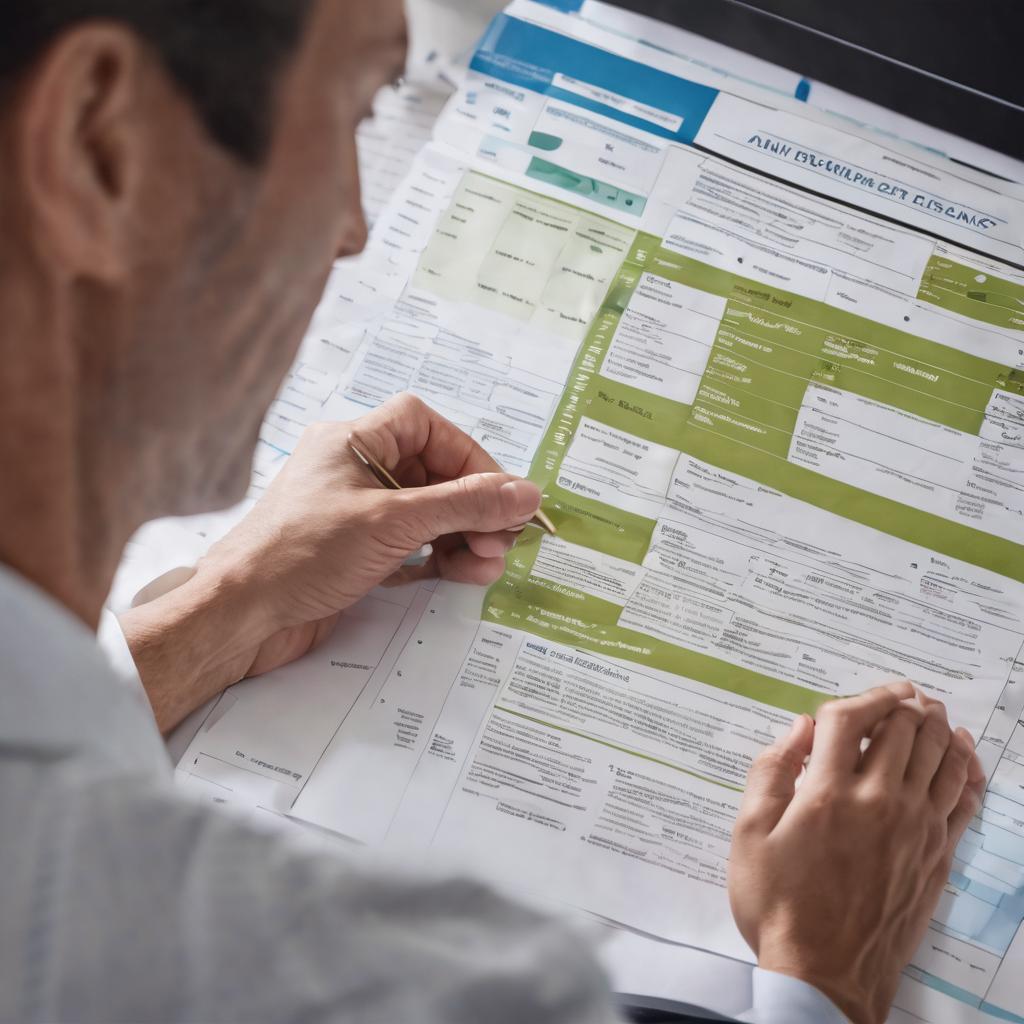How to Lower Your Auto Insurance Premiums

Contents
- 1 Understanding Your Coverage Options
- 2 Maintaining a Good Driving Record
- 3 Shopping Around for the Best Rates
- 4 Taking Advantage of Discounts
- 5 Adjusting Your Deductible
- 6 Considering the Cost of Your Vehicle
- 7 Installing Safety Features in Your Car
- 8 Paying Your Premiums in Full
- 9 Understanding the Impact of Your Credit Score
- 10 Reviewing and Updating Your Policy Regularly
Understanding Your Coverage Options
When it comes to auto insurance, understanding your coverage options is vital. With various types of coverage available, it can be overwhelming to navigate the intricacies of your policy. One of the most basic coverage options is liability insurance, which covers damages you may cause to others in an accident. This is typically required by law in most states. Another common option is collision coverage, which helps pay for damages to your own vehicle in the event of an accident. Comprehensive coverage is also available, providing protection against damage from non-accident-related incidents, such as theft, vandalism, or natural disasters. It is important to carefully review and understand the coverage options available to you so that you can make informed decisions based on your needs and budget.
In addition to the different types of coverage available, it’s also crucial to comprehend the specific limits and deductibles associated with your policy. Every insurance policy has limits, which indicate the maximum amount the insurer will pay towards a claim. For example, if you have a liability limit of $50,000, the insurance company will cover damages up to that amount. Deductibles, on the other hand, represent the amount of money you must pay out of pocket before your insurance coverage kicks in. Choosing higher deductibles can help lower your premium but may require you to pay more in the event of a claim. Taking the time to fully understand your coverage limits and deductibles will help you determine the level of protection you have and any potential out-of-pocket expenses you may face.
Maintaining a Good Driving Record
A good driving record is not only important for your safety on the road, but it also plays a crucial role in determining your insurance premiums. Insurance companies consider drivers with a history of accidents and traffic violations as high-risk, therefore charging them higher rates. To maintain a good driving record, it is essential to prioritize safe and responsible driving habits.
One of the most effective ways to maintain a good driving record is by following traffic laws and regulations. This includes obeying speed limits, using turn signals, practicing defensive driving techniques, and avoiding distractions such as texting or talking on the phone while driving. Additionally, it is important to remain aware of other drivers on the road and be prepared for unexpected situations. By being proactive and attentive while behind the wheel, you can minimize the risk of accidents and traffic violations, ultimately keeping your driving record clean and your insurance premiums affordable.
Shopping Around for the Best Rates
When it comes to car insurance, finding the best rates can save you a significant amount of money in the long run. So, it’s important to take the time to shop around and compare different insurance providers. Each company calculates rates differently based on their own set of factors, such as your driving record, the type of car you drive, and your location. By obtaining quotes from multiple insurers, you can compare the rates and coverage options available to you.
Keep in mind that while price is important, it shouldn’t be the sole deciding factor when choosing an insurance provider. You should also consider the reputation and financial stability of the company, as well as the level of customer service they provide. It’s worth checking online reviews or asking for recommendations from friends and family who have had positive experiences with their insurance providers. By conducting thorough research and shopping around, you can find the insurance policy that best suits your needs at a competitive rate.
Taking Advantage of Discounts
One of the ways you can save money on your car insurance is by taking advantage of discounts that may be available to you. Many insurance companies offer various discounts that can help lower your premiums. These discounts are typically based on factors such as your driving record, the type of car you drive, and your personal circumstances.
One common discount is the “good driver” discount, which rewards policyholders who have a clean driving record with lower rates. This discount is often given to drivers who have not had any traffic violations or accidents in a certain period of time. Another potential discount is the “multi-policy” discount, which is offered to those who have multiple insurance policies with the same company. By bundling your car insurance with other policies, such as your home insurance, you may be able to save money on both. Keep in mind that discounts can vary between insurance providers, so it’s important to shop around and see what discounts are available to you.
Adjusting Your Deductible
Adjusting your deductible can be a strategic move to save on your insurance premiums. Simply put, the deductible is the amount of money you agree to pay out of pocket before your insurance coverage kicks in. By increasing your deductible, you can potentially lower your monthly premiums. However, it’s important to strike the right balance when adjusting your deductible. While a higher deductible may result in lower premiums, it also means you’ll be responsible for a larger out-of-pocket expense if you need to make a claim. On the other hand, a lower deductible may lead to higher premiums but provide more financial protection in the event of an accident. It’s worth weighing your options and considering your financial situation before making a final decision on adjusting your deductible.
Considering the Cost of Your Vehicle
When it comes to auto insurance, the cost of your vehicle is an important factor to consider. Insurance premiums are often higher for newer and more expensive cars, as they are more costly to repair or replace in the event of an accident. So, before purchasing a new vehicle, it’s essential to research the potential impact it may have on your insurance rates.
Insurers take into account the make, model, year, and value of your vehicle. High-end luxury cars or sports cars, for example, may require higher premiums due to their higher price tags and the increased risk associated with these types of vehicles. On the other hand, older or less expensive cars may qualify for lower rates. Consider the cost of your vehicle when shopping for insurance policies, as it can significantly affect your coverage options and overall budget.
Installing Safety Features in Your Car
One effective way to enhance the safety of your vehicle is by installing various safety features. These features are designed to help prevent accidents and reduce the risk of injury in the event of a collision. There are a wide range of safety features available, including airbags, anti-lock braking systems, electronic stability control, and rearview cameras. By equipping your vehicle with these features, you can significantly improve its overall safety rating and provide yourself and your passengers with added protection on the road.
When considering which safety features to install in your car, it’s important to assess your specific needs and preferences. For instance, if you often drive in areas with heavy traffic, a rearview camera can aid in parking and maneuvering in tight spaces. If you frequently drive long distances, advanced driver-assistance systems (ADAS) can help you stay alert and avoid accidents. Additionally, some insurance companies may offer discounts for having certain safety features in your car, so it’s worth checking with your provider to see if you can save money by adding these enhancements. By investing in safety features, you can prioritize the well-being of yourself and others on the road.
Paying Your Premiums in Full
One way to manage your car insurance payments is by opting to pay your premiums in full. This means paying the entire annual or semi-annual amount upfront rather than dividing it into monthly installments. While it may require a larger initial payment, there can be benefits to paying your premiums in full.
Firstly, paying your premiums in full can help you save money in the long run. Many insurance companies offer discounts or lower rates for customers who choose this payment option. By paying in full, you may be eligible for a reduced premium, ultimately resulting in overall cost savings. Additionally, paying upfront can alleviate the stress of monthly payments and potential late fees. It simplifies your financial obligations and eliminates the possibility of missed payments, ensuring your policy remains active and without any disruptions.
Understanding the Impact of Your Credit Score
Your credit score plays a significant role in many aspects of your financial life, including your ability to secure loans and credit cards. However, you may not realize that it can also affect your auto insurance premiums. Insurance companies use your credit score as one of the factors to determine your level of risk as a policyholder. Studies have shown that individuals with lower credit scores tend to file more claims and have higher claim payouts, leading to higher insurance costs. While this may seem unfair, it is essential to understand the impact that your credit score can have on your insurance rates.
Insurance companies argue that the use of credit scores helps them predict the likelihood of a policyholder filing a claim and estimate the potential costs associated with that claim. They believe that individuals with poor credit scores are more likely to exhibit risky behavior and may be less financially stable, making them a higher insurance risk. Therefore, if you have a lower credit score, it is crucial to be aware that this can result in higher auto insurance premiums. It is advisable to review your credit report regularly, correct any errors, and work on improving your credit score to potentially lower your insurance costs.
Reviewing and Updating Your Policy Regularly
Regularly reviewing and updating your insurance policy is a crucial step in ensuring that you have the right coverage to meet your needs. As time goes by, your circumstances may change, and it’s important to make sure that your policy reflects those changes accurately. For example, if you’ve recently purchased a new vehicle, you’ll want to update your policy to include this vehicle and adjust your coverage accordingly. Similarly, if you’ve added additional safety features or enrolled in a defensive driving course, you may be eligible for discounts that can lower your premiums. By staying proactive and reviewing your policy on a regular basis, you can make sure that you’re getting the most value out of your insurance coverage.
In addition to making updates when your circumstances change, reviewing your policy regularly can also help you identify any gaps or areas where you may be underinsured. Insurance needs can vary depending on factors like your age, location, and driving history, so your coverage should be tailored to your specific situation. By taking the time to carefully review your policy, you’ll have a better understanding of what is covered and what is not. This can help you make informed decisions and avoid any unpleasant surprises in the event of a claim. So, make it a point to review and update your insurance policy regularly to ensure that you have the right coverage at the right price.






